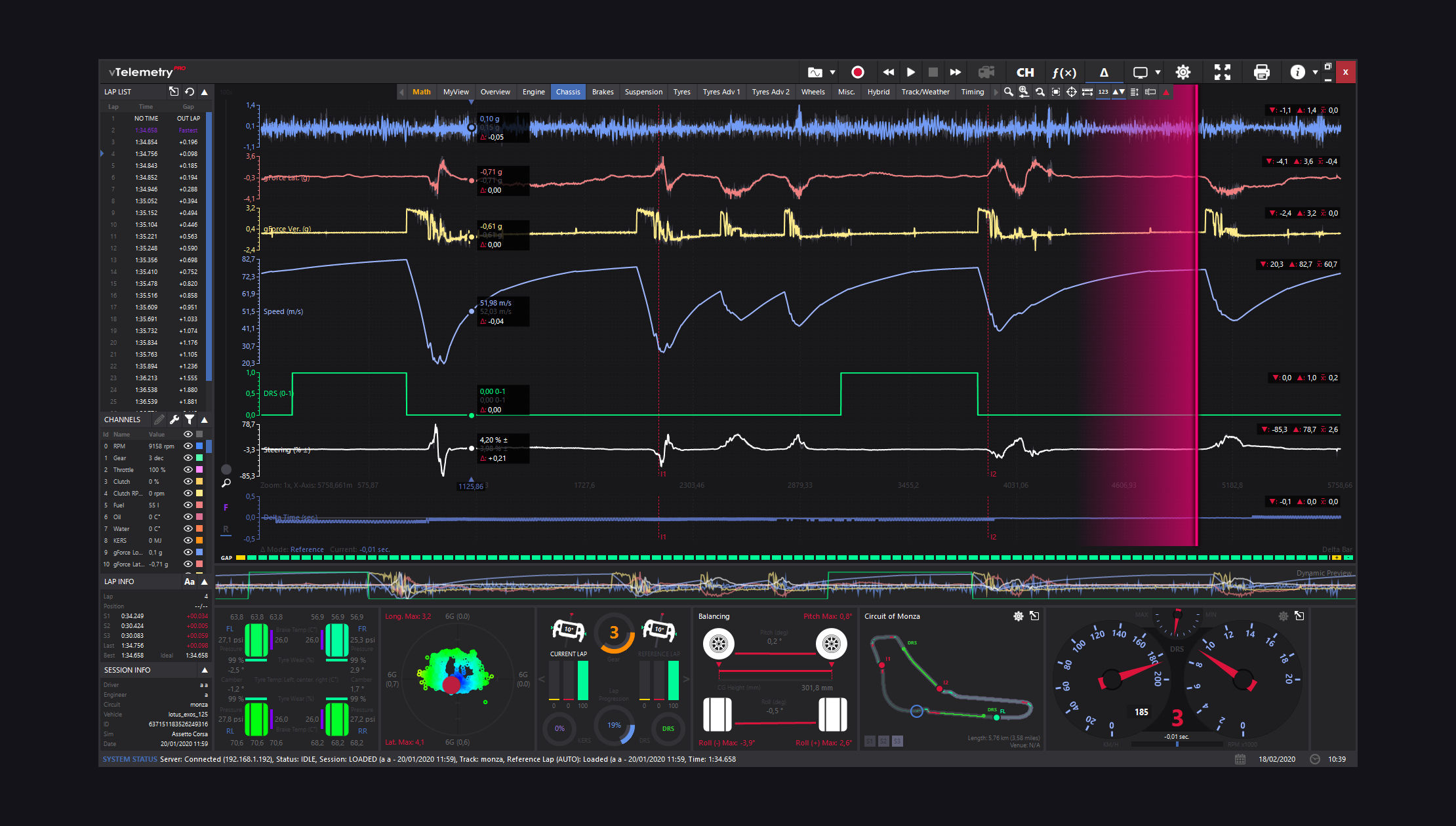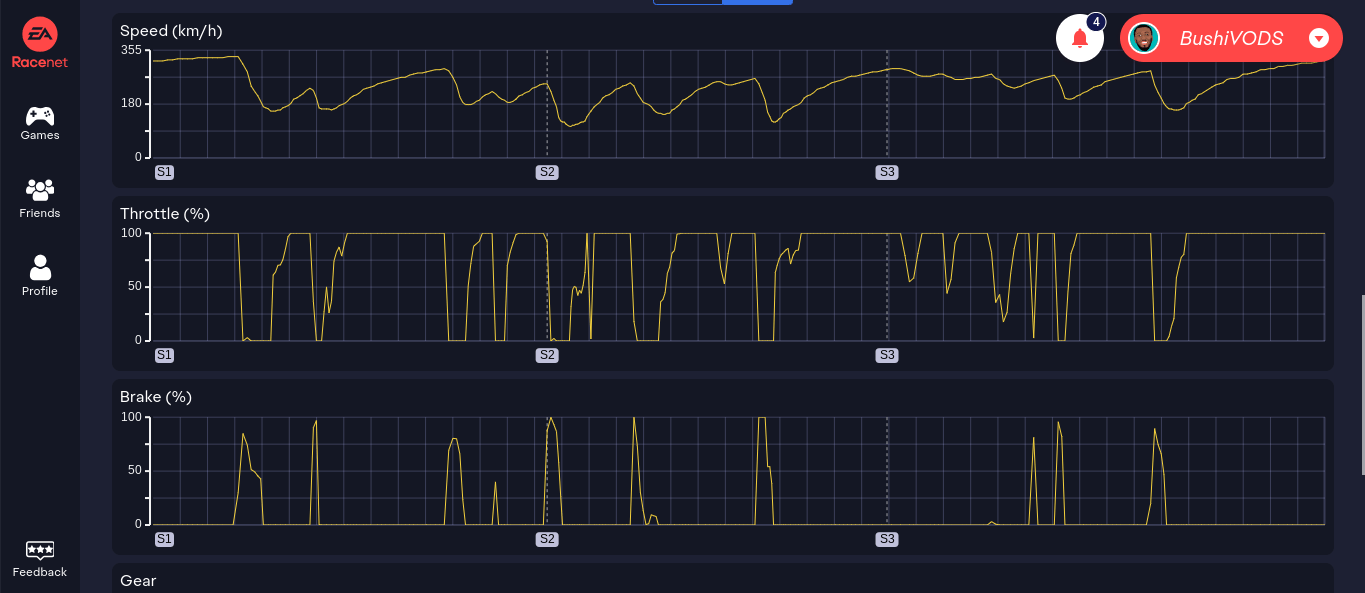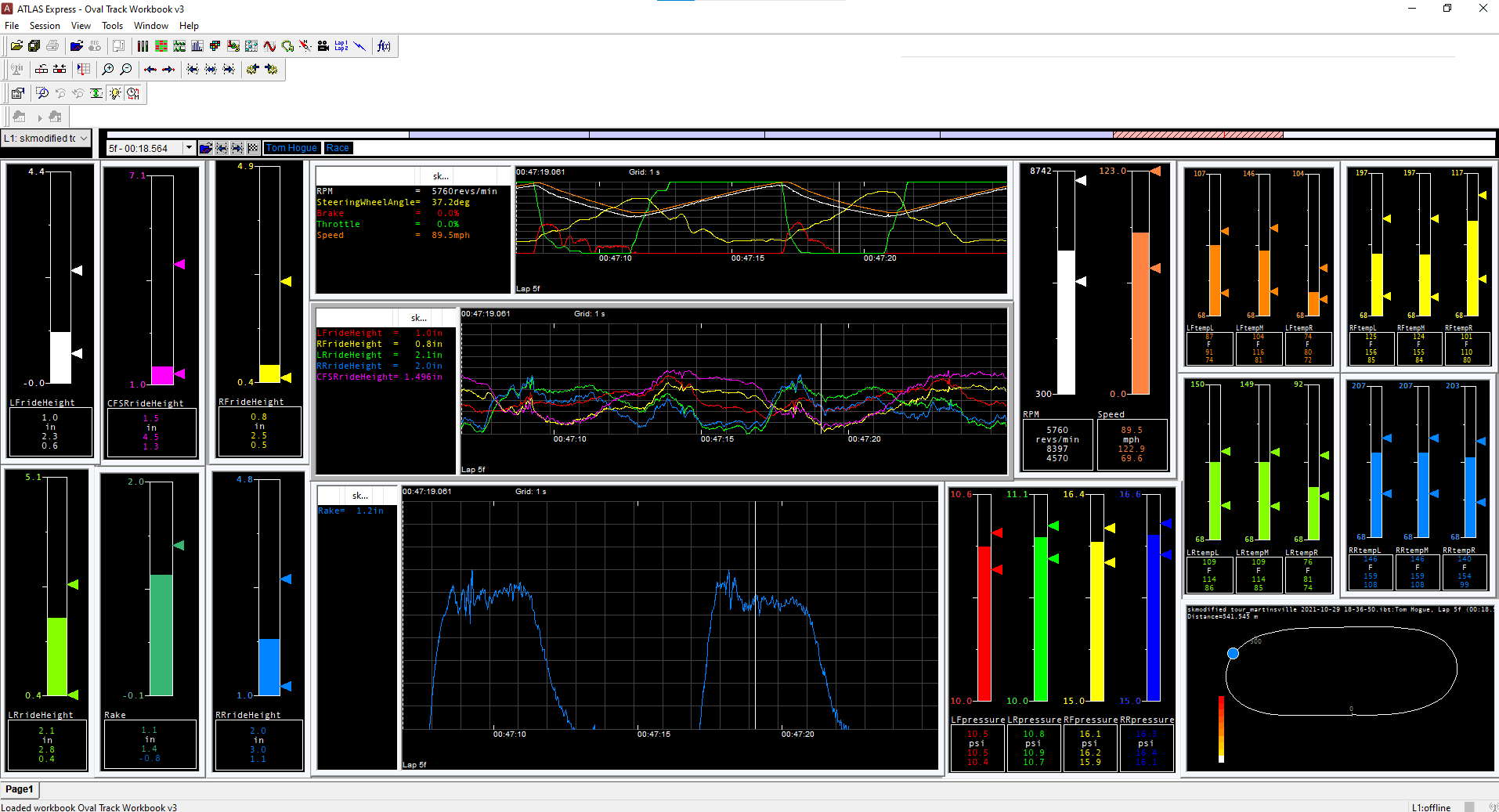Understanding telemetry in sim racing will be a game-changer if you want to shave seconds off your lap time.
Telemetry, in sim racing, is essentially the collection and analysis of data from your virtual car during a race. It's a sophisticated way to pinpoint exactly where you can improve.

Like in real-world motorsports, where teams scrutinize every detail of their car's performance, sim racers can leverage similar data to up their game. Telemetry tells a story - it gives you insights into not just your driving style but also how your car responds to your inputs and the different conditions of the track.
The value of telemetry in sim racing isn't just in gathering the data; it's also in the analysis; by understanding the 'why' and 'how' behind your vehicle's behaviour on the track, you can make informed adjustments to your driving technique and setup.
This is how you transform from a casual racer into a virtual racing pro.
Now, I'm not just talking about spotting apparent mistakes.
Telemetry can reveal the subtle nuances that separate good from grand from exceptional. You can constantly adjust your approach, but telemetry gives you the clear-cut facts you need to start making those crucial improvements right now.

To fully harness the potential of telemetry, you need to know which data points matter the most. That will include many metrics, from the basics like speed and braking points to more complex figures like suspension loads and aero balance.
Get ready to understand the intricacies of these fundamental measurements as we move on to the next section.
Demystifying Telemetry: What Data Matters Most?
Let's get down to brass tacks and discuss the data that will make a difference in your sim racing experience.
The specific metrics you track can either set you on the path to consistent improvement or lead to a wild goose chase of insignificant numbers.
First up, tire temperature is a game-changer.

It's not just about the heat; it's about the story it tells regarding your driving style and setup. Properly warmed tires mean better grip and faster laps, but there's a sweet spot. Overheat those tires, and you're sliding around like ice.
Fuel usage is another big one. It might sound not very interesting, but efficient fuel management can win or lose races, especially in more extended events. You'll learn to balance speed with fuel conservation, nailing the most strategic pit stops.

Lap times, of course, are your ultimate report card. But don't just look at the overall time; dissect it. Segment times let you know which parts of the track are your strongest and where you're leaving precious seconds on the table. It's detailed feedback that translates to actionable changes.
When it comes to vehicle dynamics, you're looking at the behaviour of your car under various conditions.
This includes metrics like speed, braking force, and steering angles. Understanding how your car reacts can tell you if you're pushing too hard or not enough, helping you find that optimum driving line.
I will show you that with some patience and practice, making sense of these data points is far from daunting.
And once you get a taste of how telemetry can transform your racing, you'll be hooked.
Practical Steps to Accessing and Analyzing Your Telemetry Data
Now that you're acquainted with the pivotal telemetry data to watch let's delve into how you can collect and dissect this gold mine of information. Don't worry too much about the nitty-gritty details just yet; I will walk you through the process step by step.
First, you must set up your sim racing rig to gather telemetry.
This might seem daunting, but many racing simulators have built-in features or plugins that do the heavy lifting. If you want to monitor how you handle those tight corners and long straights, ensure your chosen game supports telemetry data export.
Now, the fun part starts: picking out your tools.
There's a plethora of software out there specially designed for this purpose. Programs like MoTeC, iRacing's telemetry viewer, or SimHub all spring to mind. Each has strengths, so choose something that resonates with you and fits your racing needs.

Reading telemetry data doesn't need to be a chore.
You'll first encounter graphs, charts, and numbers that look like a foreign language. But once you've spent time with them, they'll make sense. For beginners, focus on user-friendly interfaces and don't rush—get comfortable with the basics before tackling the more complex analyses.
Remember, this isn't just about looking at pretty graphs. It's about decoding what your data is telling you.
Are your tires overheating by the third lap?
Is your fuel consumption pattern indicating a need for strategy tweaking?
These insights are what will guide you toward fine-tuning your performance and shaving seconds off your lap times as you seamlessly move into integrating telemetry insights into your sim racing progression.
Improving Your Sim Racing Skills with Telemetry Insights
I will show you how telemetry data isn't just for pros. It's a game-changer for anyone serious about sim racing. By leveraging telemetry, you'll discover your driving habits and where to shave off precious seconds.
For starters, scrutinize your braking points and acceleration patterns. Are you braking too early or too late? Is your acceleration smooth?

That's going to include looking at tire data. Tires are your only contact with the track, and their performance is crucial. If your tires are overheating, it might be a cue to adjust your driving style or even revisit your car's setup.
IMPORTANT TIP: Don't obsess over copying the fastest drivers' data. Instead, focus on your unique driving style and build on your strengths. Remember, your first attempt doesn't need to be your last.
You can always tweak your approach later.
Now, what about applying these insights?
I recommend starting with one aspect at a time. Take cornering, for example. Analyze your approach, mid-corner, and exit. Make adjustments, practice, and review the data to see the impact. This iterative process is critical to consistent improvement.
You might be wondering about the long-term. Well, that's where you start identifying trends. Maybe you excel in wet conditions or struggle with a particular type of corner. Use that telemetry data to pinpoint exactly where you can improve and tailor your practice sessions to tackle those areas.
Sharing insights with friends or racing teams can lead to even more significant improvements.
Collaboration often uncovers new strategies and can push your abilities further. But remember, while sharing, you're stepping into the territory that bridges competitive advantage and sportsmanship.
It's a delicate balance and deeply respected within the sim racing community.
Telemetry in Sim Racing: Considerations & Community Standards
You'll learn about the nuanced ethics topic in sim racing telemetry.
It's not just about collecting data; it's also about how you use it and share it with others. The competitive nature of sim racing means that while some players are open to sharing their insights, others might prefer to keep their data close to the vest.
The key to maintaining a fair playing ground is respecting the community standards of leagues and competitive bodies. These guidelines often dictate what is acceptable regarding the use of telemetry data in races and competitions.
It helps ensure that everyone races on the same terms.
Don't worry too much about being disadvantaged if you're new to this. Many communities are welcoming and offer mentorship to help novices understand how to leverage telemetry effectively while playing by the rules.
Choose something that resonates with you when sharing your telemetry data. If you feel comfortable contributing to the collective knowledge of your racing community, that's great!
But if you're more competitive and want to keep your findings to yourself, that's also a valid approach.
There's a lot of opportunity to learn and teach in sim racing, and telemetry data is a powerful tool in this dynamic environment. Your first attempt doesn't need to be your last—adjust your approach as you grow in the sport, always remembering that trustworthiness and credibility are paramount.

